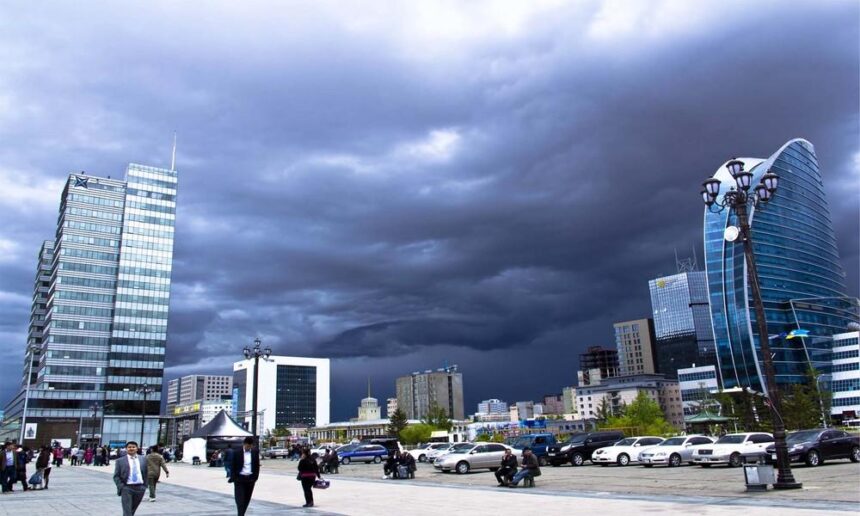Approximately 67 percent of Mongolia’s total population lives in urban areas today, and 40 percent of the urban population reside in Ulaanbaatar.
The reason why the population of our capital city grew twofold by the beginning of this century is that people migrated here seeking employment opportunities, looking for better education, trying to get closer to the market, and improving their livelihood.
It has been long since the movement of poverty from rural areas to the capital city significantly increased the pressure exerted on infrastructure.
Unless we develop our countryside, especially province and soum centers, by resolving the basic infrastructure issues such as running water and improved toilets, we might end up not being able to handle the overload on city infrastructure and see the countryside become empty.
Our rural areas are not really developing because of the lack of action to involve the community. The public need to be inspired to put in effort and establish initiatives, in turn making their livelihood better within their own province, soum, or bagh centre.
Although the government is planning a wide range of development in the countryside, their outcomes do not prove to be sufficient. If all the policies, programs, and plans they announced at all levels to develop provinces and soums came to pass, people would not be moving to the city – they would be going to live in the countryside.
The community development policies created and implemented today are not based on human needs, nor are they supporting business operations. The policies have become so political that they focus on distributing the allocated sum from the public budget to irrelevant projects such as building a stadium large enough to seat more people than the entire soum population.
GOVERNMENT-CENTERED DEVELOPMENT POLICY
Mongolia actually has a big number of policies and plans to develop the countryside. One of them is Mongolia’s 2007-2021 National Comprehensive Policy based on Millennium Development Goals, which was approved by Parliament in 2008.
In line with this policy, Ulaanbaatar and all 21 provinces revised their development objectives and plans.
However, this policy was centered on the government rather than the people. Interests of the authorities who directed the operations of the citizens’ representatives at capital city and province levels were dominantly reflected in the document.
Soum, bagh, and district local governments only follow the directives that come from above. They have very little idea about what the people who are living in the bagh or in the district want, how they see the development path going forward, and how the community can be involved.
Community development starts from bathhouses, clean toilets, and community centres where people can gather together and spend their leisure time. Today the term ‘community’ has already become a legal, distant concept used to describe an administrational unit.
When we translate the English word ‘community’, it is as if it includes the governing body of a group of people. It would be more fitting if it conveyed the message ‘a group of citizens’ or ‘khui khamtlag’ as translated by senior diplomat B.Gombosuren.
The current development program at province levels include targets such as number of physicians and hospital beds per capita, number of schools and kindergartens, becoming a regional centre of development, building paved roads, and even province GDP per capita.
However, there are no reports that involve input from people and discuss how the progress is going or what benefits the investments have brought to the livelihood of residents.
Provinces and cities do not have their own system of collecting taxes. All taxes are centralised in the public budget at the national level. It has been criticised for many years that the provinces send a lot of collected taxes to the central government and only receive a small amount in local budget in return. Ulaanbaatar has recently started collecting a one-percent tax from alcoholic beverages.
It was progressive step when it was decided in 2013 that the local authorities would have a their own development fund, with the right to manage the local budget allocated from the national public budget. But there are large differences in how provinces are spending the allocated capital on community development.
For example, some senior officials at the local level, such as citizens’ representatives of numerous provinces, traveled to many countries claiming to have studied the experiences of others. Chairmen of the citizens’ representatives’ assemblies in some provinces bought Land Cruisers worth 140 million MNT to develop their community.
HUMAN-CENTERED DEVELOPMENT POLICY
The concept of community development is misinterpreted in Mongolia, which is why it is not being ingrained into the mentality of people. For example, every province put up a huge sign that says ‘Local Government Palace’ on their headquarters.
However, it is not meant to be a building where the senior officials of a province get seated, but a public place where the people can meet and interact with the representatives they have chosen, and observe meetings.
It showed understanding when the Governor of Tunel soum from Khuvsgul province hung the sign ‘Centre to serve the citizens’ on their government building. It fits the purpose of the building.
A large political party that held the ruling power almost uninterruptedly for the longest time in our history had a ten storey building built with public funds and named it ‘The Independence Palace’. It is also the political party that developed and passed most of those development policies.
Would these governing bodies, that have declared their independence from the people, have the ability to be successful at community development?
The centre of community development policies must be the people, because they know best what they need. They understand how to work together with their neighbours, how to improve labour productivity, the optimum time to work, and when to take leave.
If a community lacks funding and needs support to improve productivity and competitiveness, this is when the government can step in to assist. This way we will have human-centered development.
When we succeed in that, our communities will start diversifying their products and services. Well known names such as Saikhan’s airag (Saikhan is a soum in Bulgan province) and Khovd’s aaruul (dried curds that come from Khovd province) can become brands.
An immediate action required from the government is to register land and other immovable property at local level, regardless of whether it is state-owned or has private ownership. It would allow community members to acquire a loan from the bank and have some working capital at least.
A community can only exist when there are local businesses that create value. Down the road businesses can expand, access bigger markets, and start selling products not only to other domestic markets but also exporting to international clients.
We need to change the angle of the policy intended for community development.
2015.11.11












